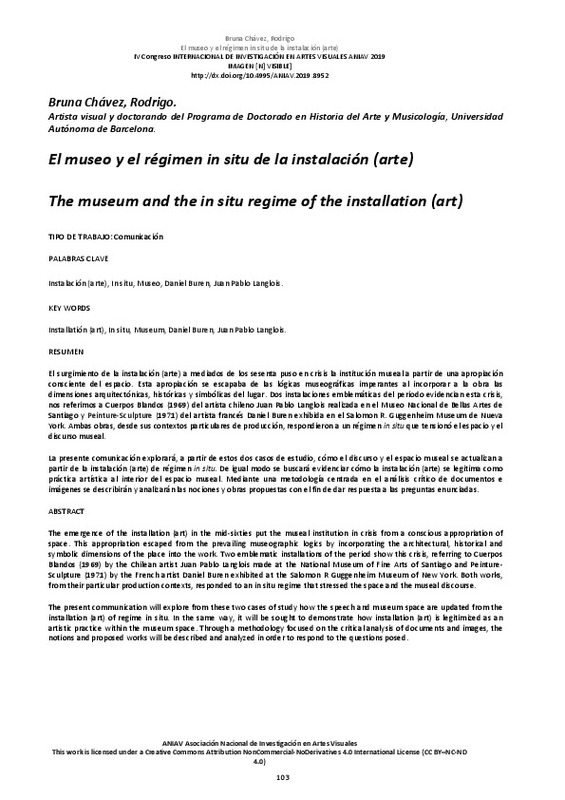JavaScript is disabled for your browser. Some features of this site may not work without it.
Buscar en RiuNet
Listar
Mi cuenta
Estadísticas
Ayuda RiuNet
Admin. UPV
El museo y el régimen in situ de la instalación (arte)
Mostrar el registro completo del ítem
Bruna, R. (2019). El museo y el régimen in situ de la instalación (arte). En IV Congreso Internacional de investigación en artes visuales: ANIAV 2019 Imagen [N] visible. Editorial Universitat Politècnica de València. 103-107. https://doi.org/10.4995/ANIAV.2019.2019.8952
Por favor, use este identificador para citar o enlazar este ítem: http://hdl.handle.net/10251/128354
Ficheros en el ítem
Metadatos del ítem
| Título: | El museo y el régimen in situ de la instalación (arte) | |
| Otro titulo: |
|
|
| Autor: | Bruna, Rodrigo | |
| Fecha difusión: |
|
|
| Resumen: |
[ES] El surgimiento de la instalación (arte) a mediados de los sesenta puso en crisis la institución museal a partir de una apropiación
consciente del espacio. Esta apropiación se escapaba de las lógicas museográficas ...[+]
[EN] The emergence of the installation (art) in the mid-sixties put the museal institution in crisis from a conscious appropriation of
space. This appropriation escaped from the prevailing museographic logics by incorporating ...[+]
|
|
| Palabras clave: |
|
|
| Derechos de uso: | Reconocimiento - No comercial - Sin obra derivada (by-nc-nd) | |
| ISBN: |
|
|
| Fuente: |
|
|
| DOI: |
|
|
| Editorial: |
|
|
| Versión del editor: | http://ocs.editorial.upv.es/index.php/ANIAV/ANIAV2019/paper/view/8952 | |
| Título del congreso: |
|
|
| Lugar del congreso: |
|
|
| Fecha congreso: |
|
|
| Tipo: |
|








